My Hardware
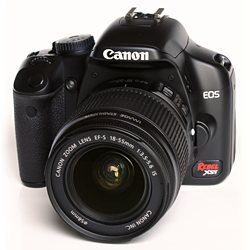
Canon EOS Rebel XSi with Canon 18-55mm f/3.5-5.6 IS Lens
For several years I had wanted a digital SLR, but because the technology was new, I had to wait for the prices to come down. Finally in 2009 the prices had come to a point where I was able to leave consumer point-and-shoots and purchase my first SLR. I bought it about four weeks before my first daughter was to be born, and then she came three days later. I have never regretted that decision. The Rebel XSi (known internationally as the 450D) is a great camera at the low end of the Canon professional EOS line. I have come to love this camera, and when it wears out, I will replace it with another Canon. The kit lens (i.e. the lens that comes together with the camera body when purchased as a kit) is a good starter lens. While not looked on highly by professionals, it still delivers higher quality than the tiny lenses built into compacts and smartphones. This lens served me well for the first three years of my oldest daughter’s life and the earliest days of her first sister. Now that I have my Sigma 50mm, the Canon 18-55mm doesn’t get used much anymore except when I need a wide angle.
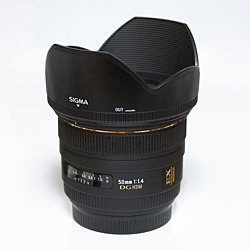
Sigma 50mm f/1.4 EX DG HSM Lens
The Sigma 50mm is the first lens that I purchased, and it is the one that stays on my camera most of the time. I was able to get it for Christmas of 2012. It is a prime lens, meaning it doesn’t zoom in and out. Prime lenses have fallen from popularity in recent years because people want the convenience of multiple focal lengths without swapping lenses. It used to be that that convenience came at the expense of a sharp image, but this advantage of prime lenses over zoom lenses has largely been eliminated. Still, a prime lens can achieve a very high quality while costing considerably less than a zoom lens of comparable quality, and it still has the advantage of having a wider maximum aperture (that is, it can let in more light) than even the best zoom lenses, which is great for situations that otherwise would require a flash. This particular lens is known for its smooth, creamy quality of areas in the photo that are out of focus. One of my preferred ways of shooting, especially for photographs of children, is to get close to the subject and shoot with a narrow depth of field so the background is out of focus, and this lens is just the right lens for that style (click here to see an example). The downside to this lens is that its auto-focus system is not as accurate, sometimes being hit or miss. I would have liked a lens that had both that creamy quality and a great auto-focus, but that would mean nearly three times the price (Canon’s professional L series). I have learned to work around it, and the images I get from it are usually my favorite.
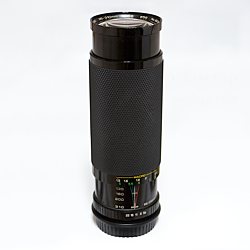
Soligor 95-310mm f/5.6 Lens
This is an old manual telephoto zoom lens that someone gave me. It was not made to fit my camera, but I was able to find a simple adapter that also has a chip in it to make the camera think this is a different lens. I have to fight with it to get the images I want, and so it amounts to more of a curiosity to occasionally pull out when I have time to mess with it. It is not a very good quality. The mount is loose, the manual focus is loose, and the lens brings in colorful halos around sharp edges in bright light. It’s rare that I need such a long lens, but when I do, sometimes I can get a really great shot once I clear up the halos in post processing.
My Software

Capture One 8
Capture One is a post-processing tool to organize, manage, and edit photographs. Photo editing with software has replaced the old darkroom techniques of the days of film. Many people don’t think about the importance of post processing. It cannot turn a bad photo into a good one, but it does make great photos even better. I usually spend a great deal more time with post processing than the time it took to shoot the photos. Capture One Pro allows for many powerful and targeted edits that the more basic programs simply do not offer.
Pixelmator
Pixelmator, an upstart competitor to Photoshop, is a different kind of image program with a different emphasis. While Capture One (along with iPhoto and Aperture below) is about photo managing and editing, Pixelmator is about image manipulation. It is used for tasks that go beyond simply tweaking photographs. It is for manipulating graphics in creative ways or even creating content from a blank canvas. It is rare that I have to leave Capture One for my photography (I use it more for other kinds of graphics), but occasionally I use Pixelmator to get creative. By the way, I used to use Photoshop for these things, but it is too expensive to keep updated. I am amazed at how much I am able to do with Pixelmator for such a reasonable price.

Coda 2
Although not a tool for photography, Coda is an important part of this website. It is my web programming tool of choice. It is basically a very fancy text editor aimed at web programmers, although there are other useful things it can do as well, such as manage all of the website files and transfer those files from my computer to the website server. I use Coda together with MAMP, which allows me to turn my computer into its own web server, so I can do all my programming on an offline copy of my website that only I can see. When it all works the way I want, I make Coda upload the changes to the live website. I use PHP as the main programming language for my website, along with the other usual languages for websites: Javascript and MySQL. Then of course is the usual HTML and CSS that is the standard language for every webpage.
Past Equipment
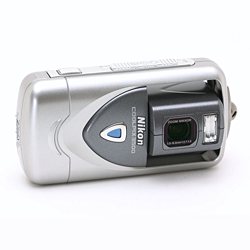
Nikon Coolpix 2500
This was my camera from 2003 until 2009. It served me well during that time, and the earlier shots in my collection were from this camera (except the earliest which are scans from film). It was during that time that photography developed into an interest for me, and I came to realize the limitations of a consumer point-and-click. I also have an iPhone 5s, by the way, but I use it for spontaneous snapshots when I don’t have my camera with me. As good as it is for snapshots, its results just aren’t satisfying to me.
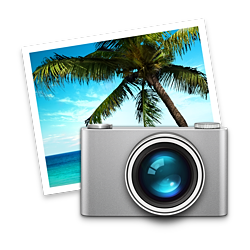
iPhoto
iPhoto by Apple was my first tool to manage and edit my early photography. It was rather capable for a program aimed at the casual user, and it used to be my recommendation for casual users. It used to come free with every Mac, but now it has been replaced by Photos, which also comes free with every Mac and iOS device.
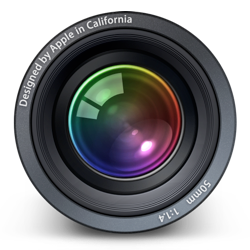
Aperture 3
While iPhoto was targeted at casual users, Aperture was its big brother that Apple designed and priced for professionals. My photography took a great leap when I began using Aperture. Unfortunately, Aperture was also replaced by Photos. While Photos may be a great replacement for iPhoto, it is not intended for a professional audience as Aperture was. When Aperture was discontinued by Apple, it left behind many of its users angry and at a loss. Many chose to go with Adobe Lightroom, while others, such as myself, chose Capture One. The transition has been a great inconvenience with already a couple of years of work invested into Aperture, but I am finally able to say that I am grateful for the transition. Capture One is the better choice for photo editing quality, which is most important to me. However, Aperture was superior at photo organization. Yet Capture One is actively being developed with significant new features released about every three months, so it is exciting to see what the future holds.